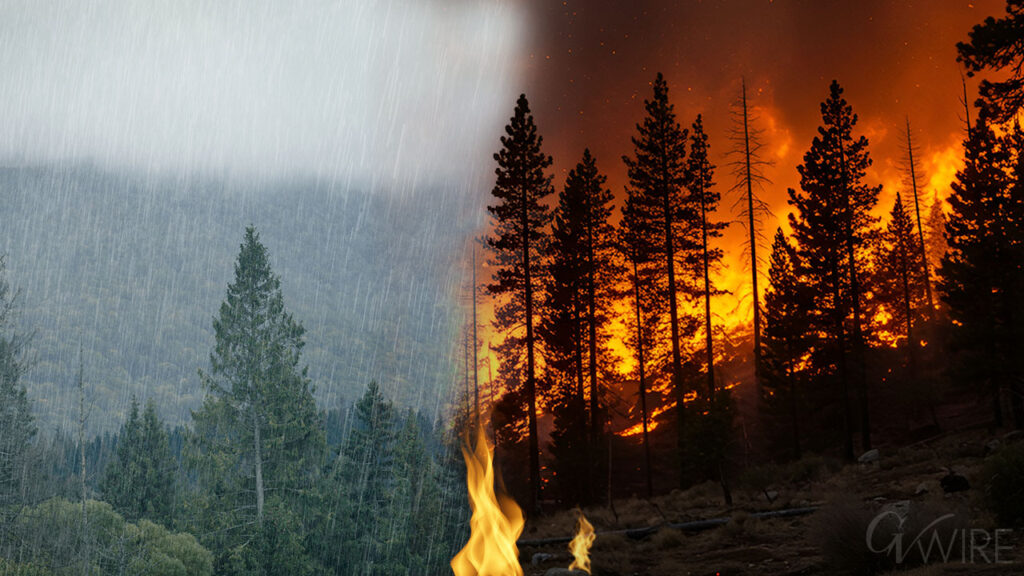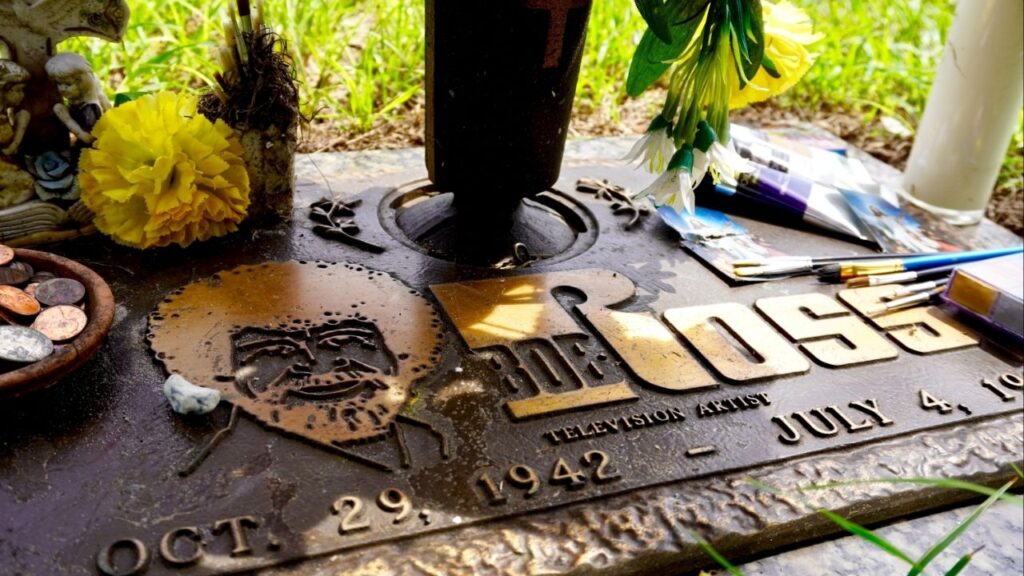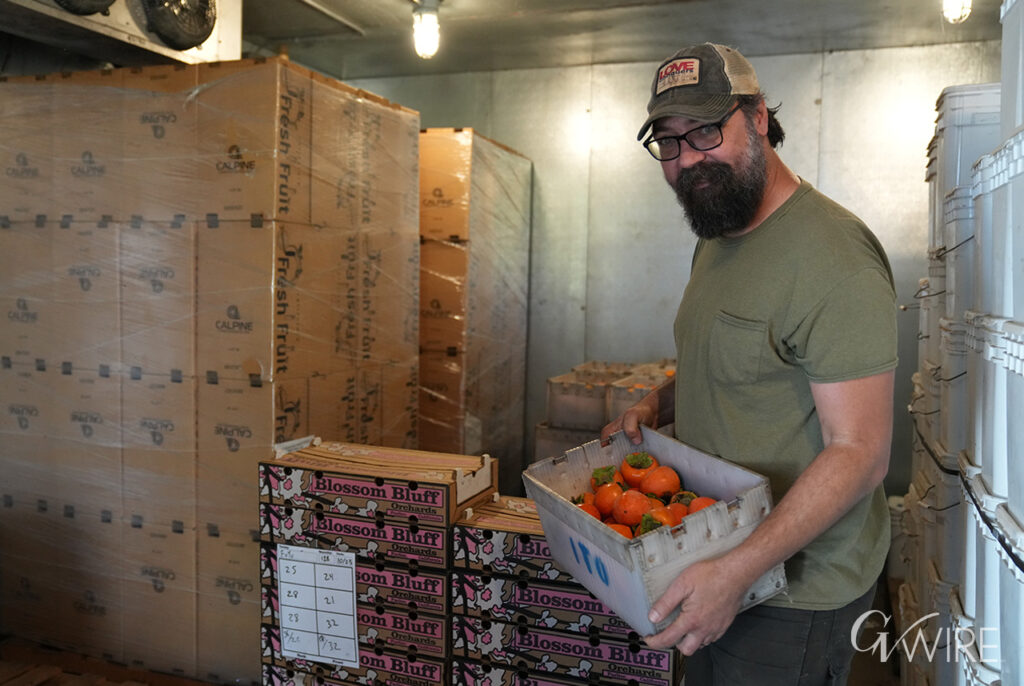The bombing of Kuwaiti Al-Salam Camp 1 in Rafah, Gaza, during Israeli military operations led to significant civilian casualties, sparking international outcry and raising questions about Israel's targeting protocols. (Planet Labs via The New York Times)

- Israel's military struck Kuwaiti Al-Salam Camp 1, a displaced persons camp in Rafah, despite civilians present.
- Israeli officials claimed they targeted Hamas operatives in the camp, using precision munitions, yet the strike caused extensive collateral damage.
- The attack drew condemnation globally, with accusations of insufficient precautions taken to protect civilians.
Share
|
Getting your Trinity Audio player ready...
|
Fear plagued Saleh Mohammed al-Hila, 37, on that Sunday.
“I was lying on the ground of the tent and told my son, ‘May God save us from this night,’” he recalled.
Hamas and Israel Attack Each Other
Hamas had launched rockets at central Israel hours earlier. Israel’s military said the barrage had been fired from Rafah — the city in the southern Gaza Strip where al-Hila was sheltering with his family in a camp for displaced people.
Israel was sure to retaliate, he thought. And it did: Israel’s military fired back and said it had destroyed the launcher used in the rocket volley, which was not near the camp.
But a few hours later, Israel struck again, dropping two bombs on temporary structures in the camp. Lethal shrapnel hurtled in every direction, and soon a fire was raging. By morning, dozens of Palestinians had been killed, including four of al-Hila’s relatives.
Related Story: Israeli Forces in Central Rafah, Expanding Offensive in Gaza
International outrage followed the second May 26 attack. Prime Minister Benjamin Netanyahu, who usually rejects criticism of Israel’s warfare, called the killing of civilians a “tragic accident.” Rear Adm. Daniel Hagari, the Israeli military spokesperson, said there were “no tents in the immediate vicinity” of the targets. Israel said it had taken great care to avoid civilian harm, despite Hamas militants’ practice of operating among civilian centers, and it would open an investigation into the strike.
The New York Times spoke with multiple witnesses and munitions experts, reviewed videos of the scene and analyzed satellite imagery to piece together a clearer picture of the strike.
Israel Claims They Did Not Know Civilians Were Present
Maj. Nir Dinar, an Israeli military spokesperson, told the Times that Israeli forces had not been aware in advance that the facility targeted was in a place serving people seeking shelter.
But the Times investigation found that Israel bombed targets inside a camp that had existed for months, sheltering hundreds of people displaced by the war. The analysis raises questions about an assessment the Israeli military said it made before launching the strike that it was unlikely to harm civilians.
Before Israel’s operation in Rafah, which began May 6, the military had issued evacuation orders for neighborhoods east of the city center, but not the area that included this camp, which had housed up to 350 families.
Related Story: Senior Israeli Official Predicts Grim Outcome as Rafah Fighting Intensifies
The camp, Kuwaiti Al-Salam Camp 1, was created several months ago, near the Tal al-Sultan area of northwestern Rafah. It eventually grew to include dozens of tents and about 40 long metal sheds with wooden frames, videos and satellite imagery show. Each shed typically housed five to seven people, though it is unclear how many people were in any of the sheds during the Israeli strike.
Bombs Fired for Two Targets
The Israeli military said its targets were Khaled al-Najjar and Yassin Rabia, Hamas officials accused of orchestrating attacks against Israelis. It said the two were holding meetings in two of the camp’s sheds.
The jets released two U.S.-made GBU-39 “small diameter” bombs, each weighing about 250 pounds and carrying 37 pounds of explosive. The maker, Boeing, bills the GBU-39 as a “low collateral damage” precision weapon.
Israel had come under intense criticism for using heavy munitions in populated areas, accused of causing indiscriminate casualties and destruction. After extensively using 2,000-pound bombs, each with 945 pounds of explosive, the Israeli military shifted to smaller, more targeted attacks.
Related Story: Israeli Strikes Kill 37 Palestinians Near Gaza’s Rafah as Offensive ...
Using bombs the size of the GBU-39 would be “certainly indicative of an effort to be discreet and targeted and precise,” said John Kirby, a White House spokesperson.
But in this strike, the combination of weapon, location and timing caused destruction well beyond the target. The explosions blasted the bombs’ steel casing into shards that could cause death and injury up to around 570 feet away. And they detonated in corrugated metal structures with the potential to create far more shrapnel.
Bombs Exploded Near People Walking By
The sheds that were targeted stood within a few yards of several others, as well as parked vehicles. Israeli military drone video analyzed by the Times appears to show at least four people walking nearby when the bombs exploded.
The two targeted sheds and the two closest to them were obliterated, an analysis of satellite imagery from the next day shows. Where a row of 11 sheds had stood, seven remained, next to about 6,000 square feet of blackened earth.
Video shot by witnesses immediately after the strike captured the chaos: people running and screaming, pulling charred bodies from flaming wreckage, clambering over twisted metal as they tried to save the living.
As grisly images from the strike spread on news sites and social media, there was no comment for hours from the Israeli military. When a statement came, it did little to clear up the initial fog of war.
Around midnight, the military said it had struck a Hamas compound using “precise munitions and on the basis of precise intelligence that indicated Hamas’ use of the area.” It was “aware of reports indicating that as a result of the strike and fire that was ignited several civilians in the area were harmed,” its statement added, saying that the “incident is under review.”
An hour later, a new statement named the two dead Hamas commanders and detailed the accusations against them.
45 Killed and 249 Injured After Bombing
As morning came, the toll climbed: 45 killed and 249 injured, Gaza’s Health Ministry said that afternoon.
Netanyahu offered his first comments on the attack around 6:30 p.m. Monday — nearly 22 hours after the strike. He told the Israeli parliament that “despite our supreme effort not to harm uninvolved civilians, a tragic accident occurred to our regret last night.” And he said, as he often has, that Hamas embeds in the civilian population to ensure innocent casualties.
Ghazi Hamad, a senior Hamas official, has said the group tries to keep Palestinian civilians out of harm’s way. But Hamas has taken advantage of the urban areas in Gaza to provide its fighters and weapons infrastructure with an extra layer of protection.
With international calls for accountability growing, Hagari said Tuesday that the bombs were “the smallest munition that our jets can use.” That is true, though some Israeli drones can carry smaller explosives.
Although he said there were “no tents in the immediate vicinity” of the targets, satellite imagery from the same day shows more than 60 tents and other makeshift structures within 500 feet, inside the range given by U.S. military reference guides for risk of death or serious injury.
Israel Failed to Safeguard Civilians
The Times’ analysis shows that the site targeted was within the borders of the camp, and suggested Israel had failed to take adequate care to safeguard civilians. The camp was well-known, the metal sheds were spaced just over 1 meter apart, and there were tents in the area.
Hagari has said Israel engaged in aerial surveillance to avoid civilian casualties and even delayed the strike on that basis. But Dinar said that if people were there, “it is because Hamas took them there and hid behind them.” And he declined to discuss the decision-making process behind the strike in detail, saying it was being investigated by a military commission.
The Israeli military also referred questions to COGAT, an Israeli agency dealing with the Palestinian territories, which did not respond.
To support the contention that Hamas operated in the area, Hagari showed surveillance imagery of a battery of rocket-launching tubes about 140 feet from the target. Hamas had fired toward Israel from there Oct. 7, he said. The tubes were still there, intact, when the Times visited the site after the strike May 26.
The Israeli military’s top legal official, Maj. Gen. Yifat Tomer-Yerushalmi, called the strike in Rafah “very serious” and told a conference that it would be investigated “to the fullest extent.”
–
This article originally appeared in The New York Times.
Bilal Shbair, Iyad Abuheweila, Neil Collier, Cassandra Vinograd, Christiaan Triebert and Lauren Leatherby/Planet Labs
c.2024 The New York Times Company
Distributed by The New York Times Licensing Group
RELATED TOPICS:
Categories

Fresno Shooting Probe Leads to Three Arrests, 20 Firearms Seized

Marjaree Mason Center Begins Search for Its Next Leader

US Trade Tribunal To Consider New Apple Watch Import Ban

















